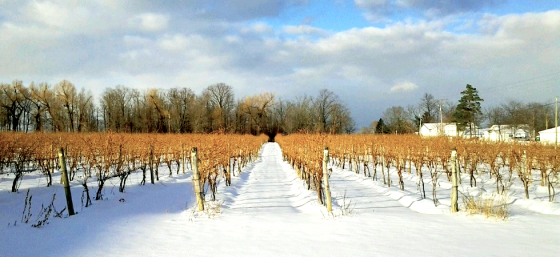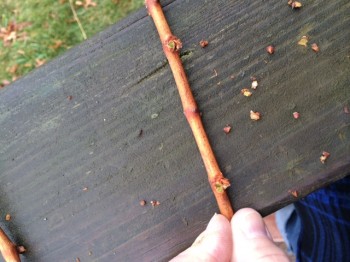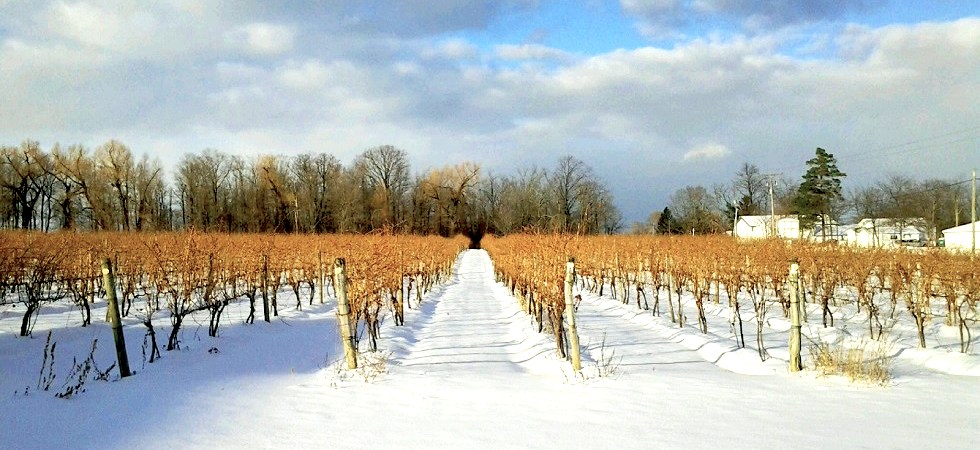
On Saturday, Steve Shaw of Shaw Vineyard spent about an hour carefully cutting buds from canes he pulled from his vineyard. It had been several days since the coldest weather to hit the region in years had finally lifted. Reports varied from county to county, town to town, vineyard to vineyard. The lowest temperatures had plunged perilously close to ten degrees below zero. Shaw wanted to know how his canes had dealt with it.

There is no hard line of temperature that will inevitably cause vine death, but ten below is an unofficial rule of thumb. Growers will say that ten below for three hours or more is precarious territory. Buds can die, cutting down the next year’s crop. Vine death is devastating for the obvious reason — that vine has to be replanted, with no fruit to bear for the year — but it is more than a one-year burden. New vines require several years to produce wine-worthy fruit, and if you subscribe to the oft-debated notion that older vines produce better wine, it is even more painful.
Temperature does not tell the entire story, however. Vines are more vulnerable if there is not a blanket of snow to insulate them. This time around, there was plenty of snow. Then there is the issue of temperature variation. Wild swings are dangerous. A vine can be briefly confused by abnormally warm temperatures, only to be shocked when the temps plunge 40 degrees in less than a day. That scenario was on the minds of growers last week, but the snow provided comfort.
“While things are looking good in the vineyard from the outside, we’re concerned with what might be going on inside of the vines and buds,” said Kristina Rose, the wine club manager for Damiani Wine Cellars on Seneca Lake. “On Tuesday we started gathering samples from varietal blocks to assess damage, if any.”
Over at Hosmer Winery on Cayuga Lake, “We experienced -7 as the lowest temperature on the farm, with eight inches of snow on the level after the storm,” explained Katie Roisen, Marketing Director. “Regardless, the vines appear hearty and strong.”
The real answers will come this spring, said viticulture extension specialist Hans Walter-Peterson of Cornell University’s Finger Lakes Grape Program.
“We really won’t know anything definitive as far as how much injury there was to the trunks until this spring, when the vines start to come out of dormancy,” Hans told NYCR. “As far as buds dying, the most recent data we have on bud hardiness from Geneva suggests that the vast majority of buds should be able to handle the low temperatures we’ve had so far.”
But with melting snow on Monday, driven by a spike to the mid-50s, the region was once again feeling vulnerable. “Warmer temperatures can cause water to move into the vascular tissues in the trunks,” Hans said. “If the air temperature drops quickly, the water in some of those cells can freeze, which will bust those cells and can cause the trunks to split open. A small split in a trunk generally isn’t too much of a problem, but if enough of the trunk cracks, that can weaken the vine or possibly kill it.”
A survey across the Finger Lakes found average lows from -3 to -8. The likely result is some minor bud damage to vinifera vines, but little to no vine death. Farther west, it was a different story. Ohio and Michigan, featuring wine regions trying to grow and thrive, saw temperatures in the negative teens. It was a reminder that while the Finger Lakes is a cool climate region, it retains a climatic advantage that probably deserves more praise and understanding.

